Canning green beans is quite easy as long as you are following a safe tested recipe and you are using a Pressure Canner. Pressure canning is a great way to preserve fresh produce and ensure that you can enjoy it all year round.
Green beans are one of the best vegetables to can using this method, known for their ease of preparation and delicious taste. Additionally, pressure canning extends their shelf life, making them a convenient pantry staple.
In this comprehensive guide, I will provide you with a step-by-step tutorial on how to prepare, pack, process, and store your canned green beans. Whether you’re an experienced canner or just starting, this post will equip you with everything you need to know for successful pressure canning.
Selecting the Best Green Beans
Before starting the pressure canning process, it is crucial to pick and prepare fresh, high-quality produce. While I often get my beans from my garden, store-bought beans work just as well. Look for firm, crisp beans without any blemishes or spots. Opt for smaller, younger beans as they offer a more tender and flavorful result.
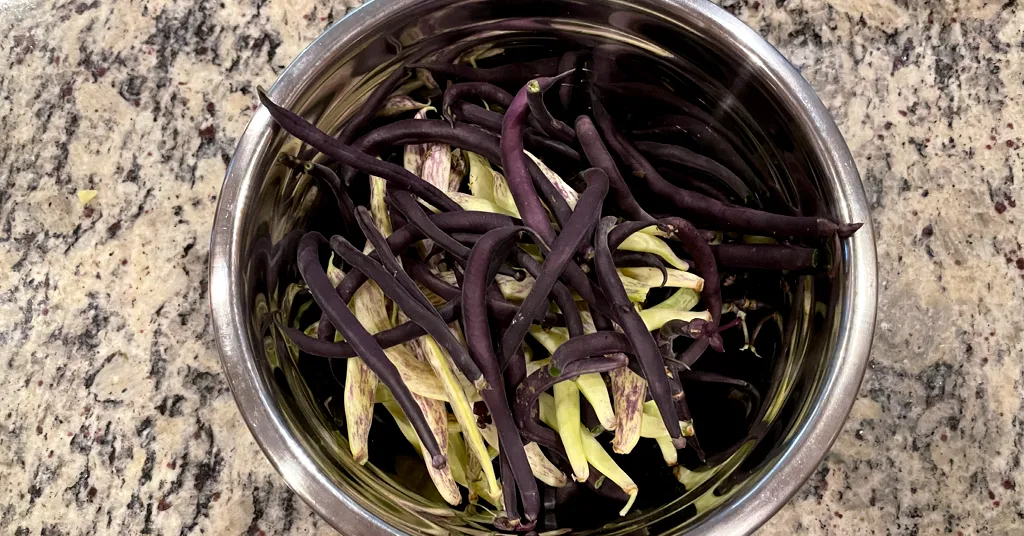
Garden Green Beans
When picking green beans from the garden, you have the opportunity to select beans that are perfectly ripe and ready to be harvested. You can also choose the size and variety of beans that you prefer, and enjoy the satisfaction of growing your food. However, not everyone has access to a garden or the time to tend to one.
Store-bought Green Beans
In these cases, picking green beans at the store can be a convenient option. Store-bought or farmers market beans are often fresher than those that have been shipped long distances, and you can typically find a wide variety of beans to choose from. Whether you’re picking green beans from your garden or selecting them at the store, the key is to choose beans that are fresh, firm, and free from blemishes or spots.
Preparing Green Beans for Canning
Once you have selected your beans, thoroughly wash them in cool water and trim the ends. You have the option to leave the beans whole or cut them into 1-2 inch pieces. While some may prefer blanching the beans briefly in boiling water before canning, this step is entirely optional. The key is ensuring that the beans are clean, fresh, and ready for packing into jars.
Choose your Canning Method
You can utilize either the Raw Pack method or the Hot Pack Method when canning green beans. The recipe below will include information on performing both methods so you can choose which one is right for you.
Raw Pack Method
Raw packing is a canning method in which raw, uncooked food is packed directly into canning jars without pre-cooking. Your canning jars still need to be kept hot with this method.
Hot Pack Method
Hot packing is a canning method in which food is partially cooked before being packed into canning jars. Your canning jars need to be kept hot.
Pressure Canning Green Beans
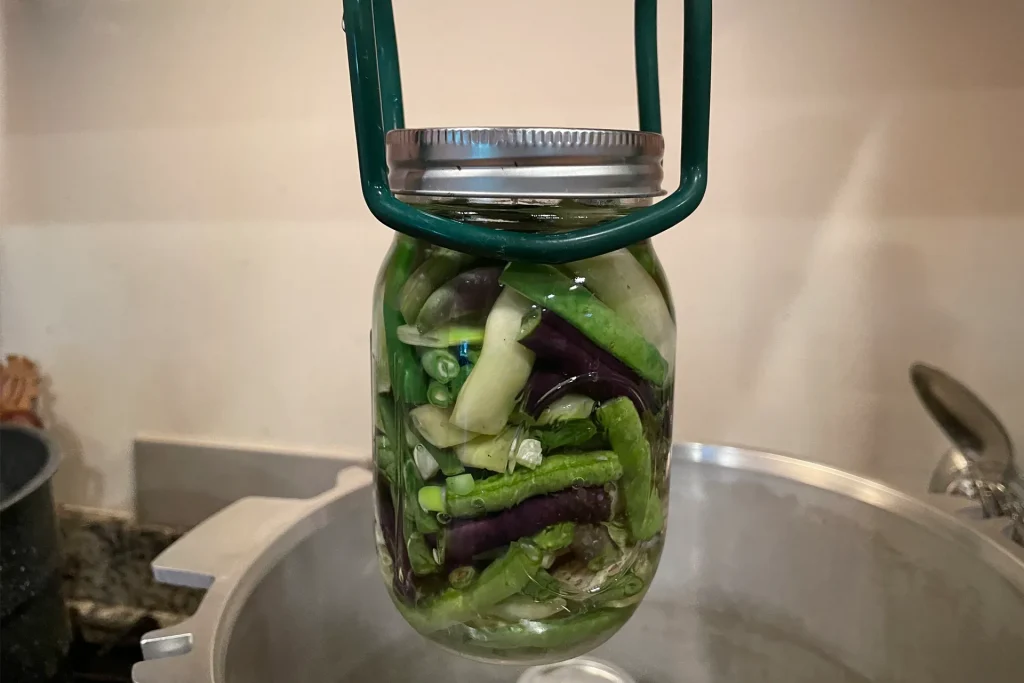
Canning Supplies
Ingredients for Canning Green Beans
- Green Beans (You will need 4 1/2 pounds to 7 1/2 pounds of Green Beans. This will yield about 6 pint jars or 3 quart jars depending on how tightly you pack the beans into the jar.)
- salt (optional) (1/2 tsp per pint jar or 1 tsp per quart jar)
- Hot Water
Step-by-Step Canning Instructions
- Prepare your Pressure Canner according to Manufacturer instructions.
-
Clean jars and lids with warm soapy water. Ensure the jars do not have any chips or bubbles in the glass. Heat jars in hot water.
-
Wash your beans under cold running water then drain your beans. Remove the string and trim the bean ends with your knife and cutting board.
-
Cut or break your beans into 2-inch pieces.
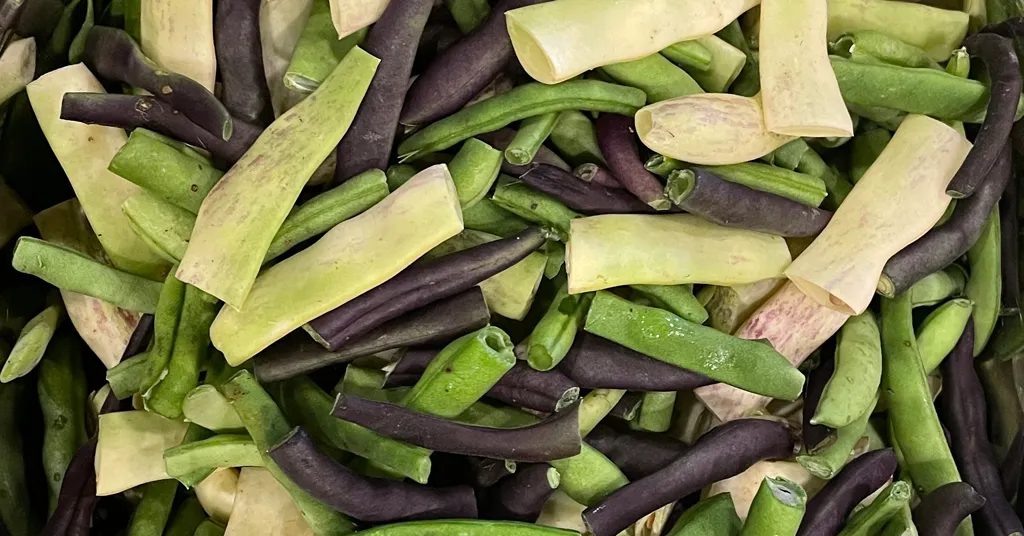
Raw Pack Method
-
Bring water to a boil in an electric water kettle or a large pot on your stove. Reduce to a simmer, keeping your water hot.
-
Pack your raw beans as tightly as possible (do not crush your beans) into your hot jar, leaving 1 inch of headspace (Measure with your headspace measurer).
-
Add 1/2 tsp of salt per pint jar or 1 tsp of salt per quart jar if desired.
-
Ladle or pour hot water over green beans leaving 1 inch of headspace.
Hot Pack Method
-
Bring water to a boil in a large pot.
-
Blanch beans in boiling water for 5 minutes. Remove beans.
-
Reduce the heat of cooking water to a simmer. Keep the water hot.
-
Pack hot beans into a hot jar, leaving 1 inch of headspace.
-
Add 1/2 tsp of salt per pint jar or 1 tsp of salt per quart jar if desired.
-
Ladle hot cooking water over beans leaving 1 inch of headspace.
Continued Instructions for Both Raw and Hot Pack Recipes
- Remove air bubbles from the jars using your de-bubbler.
- Clean your jar rim with a damp paper towel.
- Place the lid and band on your jar. Adjust to fingertip-tight.
- Using your jar lifter place your jar into your prepared hot pressure canner.
- Repeat until all beans are used.
- Adjust the water level if needed in the canner, lock the pressure canner lid and bring to a boil over medium-high heat. Vent steam for 10 minutes, then close the vent. Continue heating your pressure canner to achieve 10 lbs of pressure (Make sure to adjust for your altitude) and maintain that pressure for the entire cooking time.
- Process Pint Jars for 20 minutes and Quart Jars for 25 minutes. Set a timer so it is much easier to remember how long you need to pressure can for.
- Turn off the heat when the timer is complete. Let pressure return to zero naturally. Wait 2 minutes after the pressure gauge reads 0, then open your vent. Remove your canner lid (making sure to lift it away from you so you don’t get burned by the steam).
- Leave jars in the pressure canner for 10 minutes after you remove the lid. Using your jar lifer carefully move the jars onto a wire rack or kitchen towel to allow them to cool. When moving the jars try not to tilt them to the side as this could affect the seal of the jars. Allow your jars to cool for 12-24 hours before handling.
- Once cool, remove the canning rings from the jars. Wash your jars off to ensure there is no food residue on the outside of the jar from processing. Label your jar with the name of the recipe and date. This will help you remember what recipe you used to can and the date will allow you to use the oldest canned goods first.
Did you try this recipe? Let me know your results in the comments below.
Additional pressure canning recipes you might want to try:
Recipe Card
Canning Green Beans
Equipment
- Water kettle or pot of hot water
Ingredients
- Green Beans You will need 4 ½ pounds to 7 ½ pounds of Green Beans. This will yield about 6 pint jars or 3 quart jars depending on how tightly you pack the beans into the jar.
- salt (optional) ½ tsp per pint jar or 1 tsp per quart jar
- Hot Water
Instructions
- Prepare your Pressure Canner according to Manufacturer instructions.
- Clean jars and lids with warm soapy water. Ensure the jars do not have any chips or bubbles in the glass. Heat jars in hot water.
- Wash your beans under cold running water then drain your beans. Remove the string and trim the bean ends with your knife and cutting board.
- Cut or break your beans into 2-inch pieces.
Raw Pack Method
- Bring water to a boil in an electric water kettle or a large pot on your stove. Reduce to a simmer, keeping your water hot.
- Pack your raw beans as tightly as possible (do not crush your beans) into your hot jar, leaving 1-inch of headspace (Measure with your headspace measurer).
- Add ½ tsp of salt per pint jar or 1 tsp of salt per quart jar if desired.
- Ladle or pour hot water over green beans leaving 1-inch of headspace.
Hot Pack Method
- Bring water to a boil in a large pot.
- Blanch beans in boiling water for 5 minutes. Remove beans.
- Reduce the heat of cooking water to a simmer. Keep the water hot.
- Pack hot beans into a hot jar, leaving 1-inch (2.5 cm) of headspace.
- Add ½ tsp of salt per pint jar or 1 tsp of salt per quart jar if desired.
- Ladle hot cooking water over beans leaving 1-inch (2.5 cm) of headspace.
Instructions Continued for recipes using either the raw pack or hot pack method
- Remove air bubbles from the jars using your de-bubbler.
- Clean your jar rim with a damp paper towel.
- Place the lid and the band on your jar. Adjust to fingertip tight.
- Using your jar lifter place your jar into your prepared hot pressure canner.
- Repeat until all beans are used.
- Adjust the water level if needed in the canner, lock the pressure canner lid, and bring it to a boil over medium-high heat. Vent steam for 10 minutes, then close the vent. Continue heating your pressure canner to achieve 10 lbs (69 kPa) of pressure (Make sure to adjust for your altitude) and maintain that pressure for the entire cooking time.
- Process Pint Jars for 20 minutes and Quart Jars for 25 minutes. Set a timer so it is much easier to remember how long you need to pressure can for.
- Turn off the heat when the timer is complete. Let pressure return to zero naturally. Wait 2 minutes after the pressure gauge reads 0, then open your vent. Remove your canner lid (making sure to lift it away from you so you don't get burned by the steam).
- Leave jars in the pressure canner for 10 minutes after you remove the lid. Using your jar lifer carefully move the jars onto a wire rack or kitchen towel to allow them to cool. When moving the jars try not to tilt them to the side as this could affect the seal of the jars. Allow your jars to cool for 12-24 hours before handling.
- Once cool, remove the canning rings from the jars. Wash your jars off to ensure no food residue on the outside of the jar from processing. Label your jar with the name of the recipe and date. This will help you remember what recipe you used to can and the date will allow you to use the oldest canned goods first.
Notes
Robin
Robin Phelps has been preserving food for her family for over 20 years. Today, Robin is a full-time home preservation blogger and coach. Join Robin to learn how to easily make delicious and safe homemade preserved items.

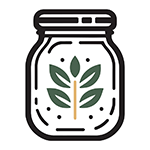
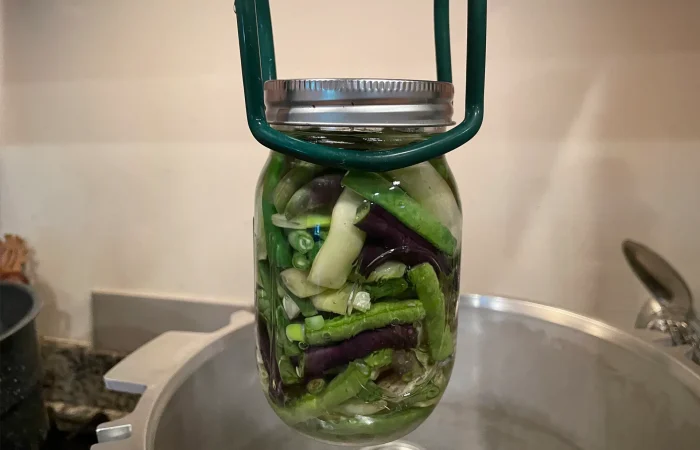
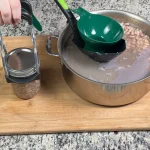
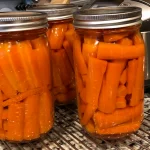
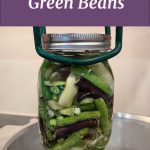

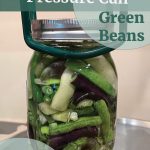

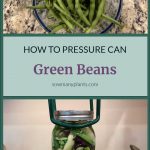
No Comment! Be the first one.